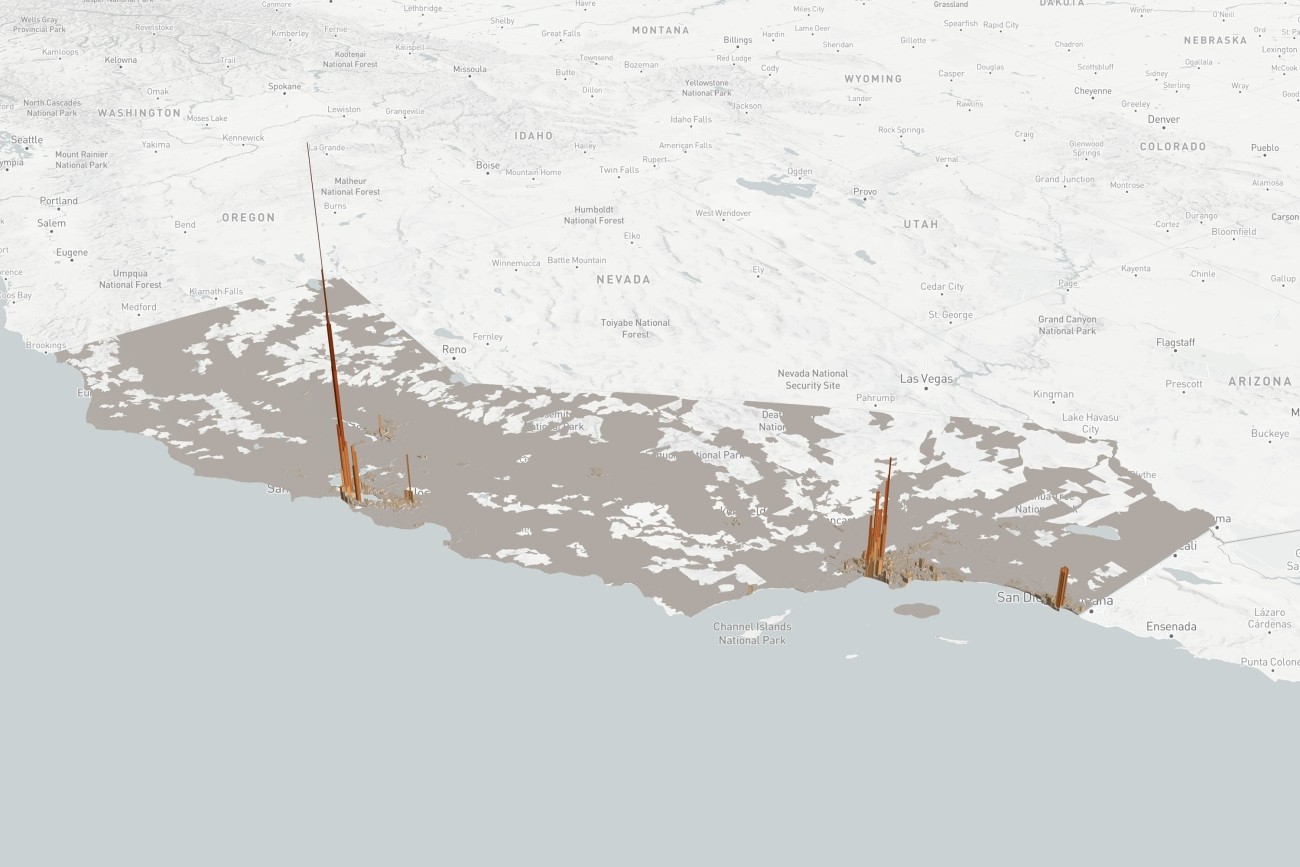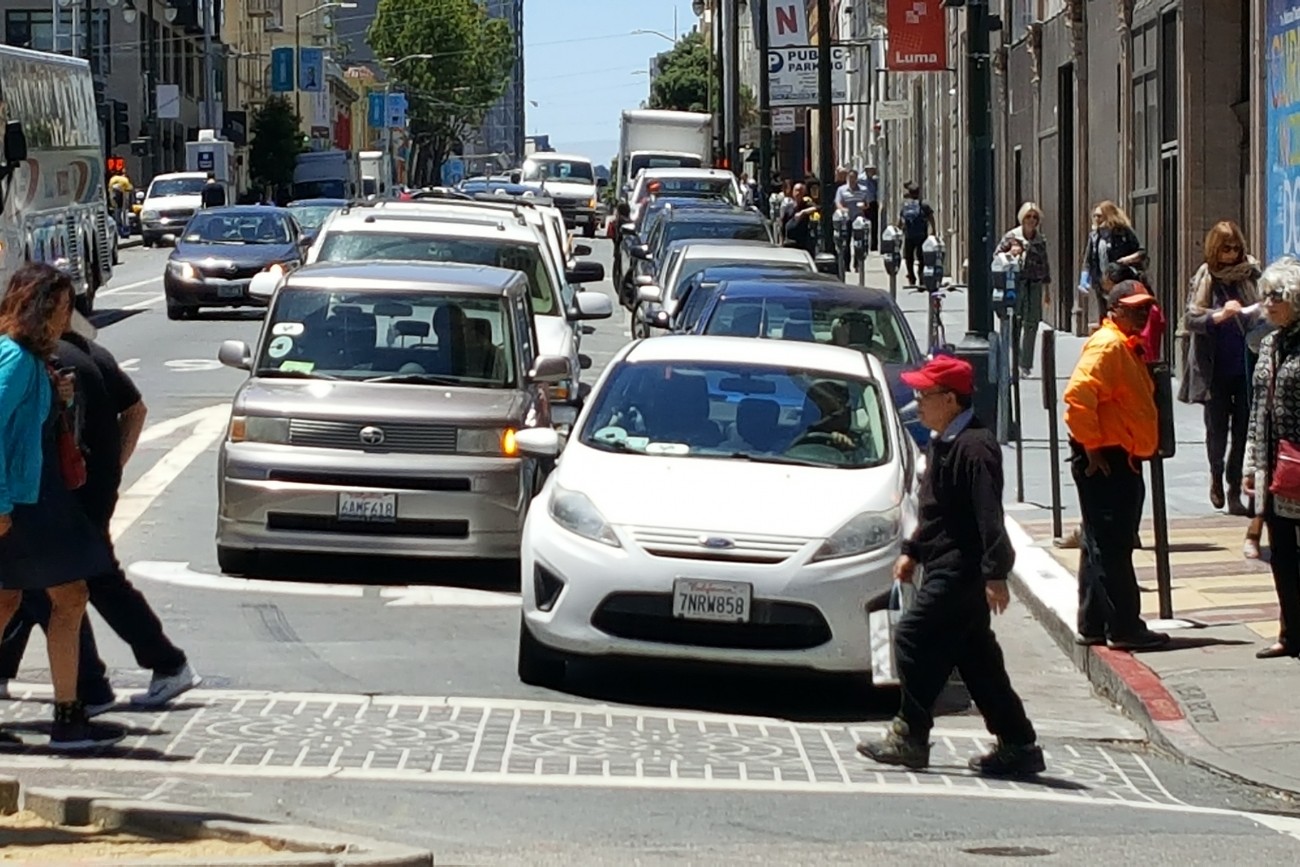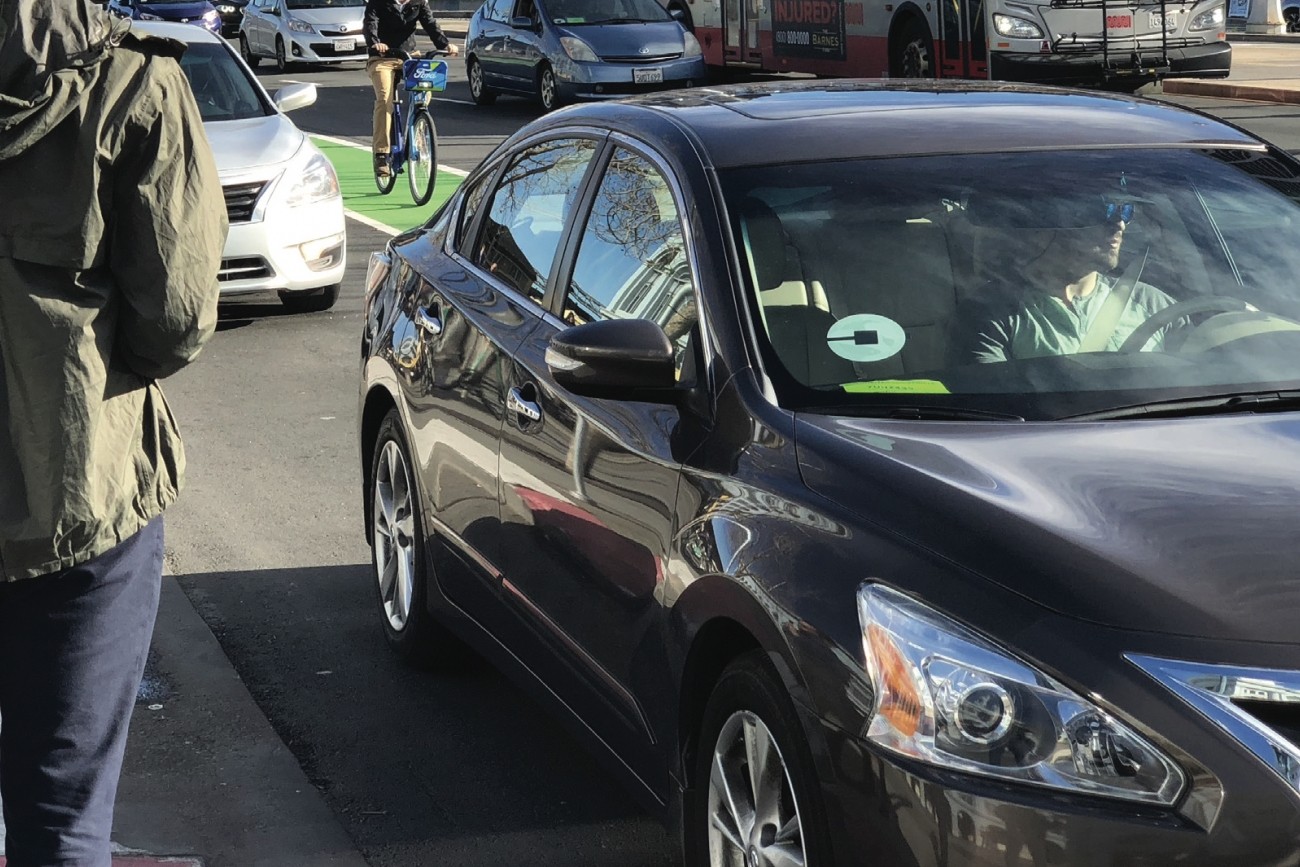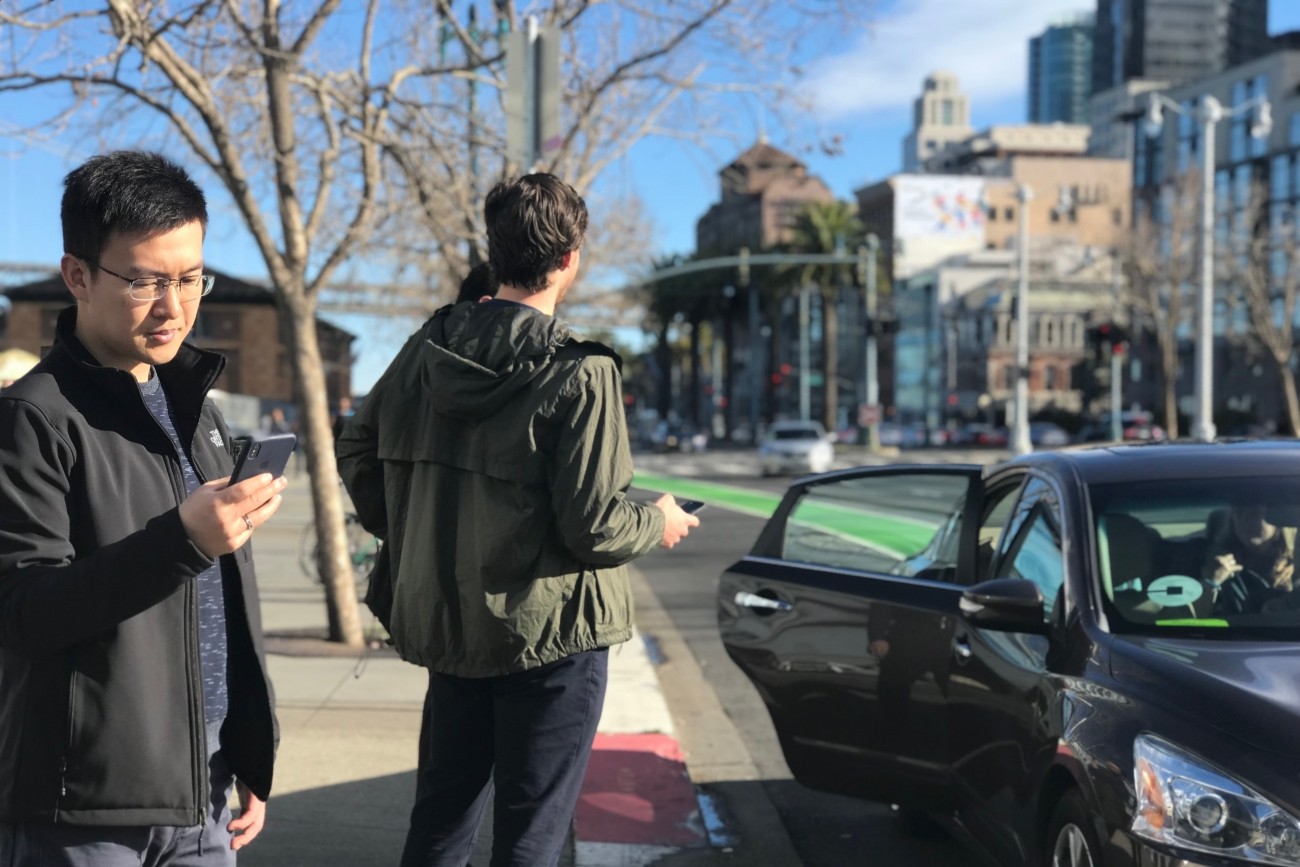
Photo: SFMTA Photography Department
Introduction
The rapid expansion of ride-hail companies across the country has led to a wide range of new policy and legislative measures at both state and local levels. The TNC Regulatory Landscape report provides an overview of existing state and local regulatory frameworks focusing on ride-hail companies, also known as transportation network companies (TNCs).
At the state level, regulation of ride-hail companies is driven primarily by concerns around safety, liability, and fares. In addition, dozens of cities and counties across the country have enacted their own policies to regulate ride-hail operation within their boundaries.
Regulatory Framework in California
The California Public Utilities Commission oversees statewide policies for ride-hail companies and is engaged in a rulemaking process (which may last from 2017 to 2020) to refine regulations for these companies. In addition to existing state regulations, there are local business registration requirements and airport permit requirements in place in some areas of the state, including San Francisco.
TNC Regulatory Framework in other Jurisdictions
Most states now have TNC regulatory frameworks in place, but the extent of the rules and regulations vary widely. In most cases, states with major metropolitan centers allow those jurisdictions to establish more specific regulations or provide financial support from state fees to mitigate local impacts. In California, state authority preempts local control, and the state does not provide state fees to mitigate local impacts.
Resources
Final Report: TNC Regulatory Landscape, 2018 (PDF)
California Public Utilities Commission Transportation Network Companies webpage
Contact
The table below summarizes how California has developed regulations that apply to San Francisco’s 10 Guiding Principles for Emerging Mobility Services and Technologies.
All regulations are carried out by the California Public Utilities Commission unless otherwise noted. An expanded table which compares California’s regulations to those in other cities and states can be found in the full The TNC Regulatory Landscape report (PDF).
Collaboration
The state does not require TNCs to engage in any form of community outreach in the municipalities where they operate.
Transit
TNC drivers may only solicit riders through e-hail (street-hailing is prohibited).
Local regulations restrict use of bus stops and transit lanes.
Local color curb programs identify parking and loading restrictions by vehicle type.
Congestion
There are currently no TNC-specific policies to mitigate vehicle congestion.
Sustainability
TNCs are prohibited from owning fleets, which reduces their ability to shift the TNC fleet to more sustainable fuel types.
Equitable Access
TNCs may allow drivers and passengers to “rate” each other, but TNCs must ensure that rating platforms do not discriminate against protected classes.
Labor
TNCs currently operate as independent contractors instead of employees, though this classification is being disputed in federal court.
Disabled Access
TNCs must submit and annually update a plan that includes a timeline for passengers with accessibility needs to use their services.
Financial Impact
TNCs must pay a $1,000 initial application fee, with a $100 annual fee required thereafter.
TNCs must contribute 0.33% of their gross California revenues, paid into CPUC Transportation Reimbursement Account.
San Francisco International Airport charges a $3.80/trip cost recovery fee.
Safety
National criminal and sex offender database background checks are required, and TNCs must conduct a driver history check through the DMV.
TNC vehicles must undergo a 19-point vehicle inspection before service and annually or every 50,000 miles.
TNCs must establish a driver training program to ensure that drivers are safely operating their vehicles prior to offering service.
Drivers are allowed to drive a maximum of 10 hours, which resets after an 8-hour rest period.
TNCs are required to have a zero-tolerance drug and alcohol policy.
The DMV requires hands-free operation of cell phones.
Local laws prohibit double parking and stopping in crosswalks.
TNCs are required to provide insurance during ride (pre-ride request, ride-accepted, and while transporting the rider).
Accountability
On an annual basis, TNCs must report on numbers of accessible vehicles, data associated with each trip taken, the number of driver violations and accidents, and average and mean driver hours of operation.
TNCs must apply for a permit from the state every three years.
City law requires TNC drivers operating in San Francisco to obtain a local business license.
TNC drivers must apply for a permit if they wish to operate at San Francisco International Airport.














